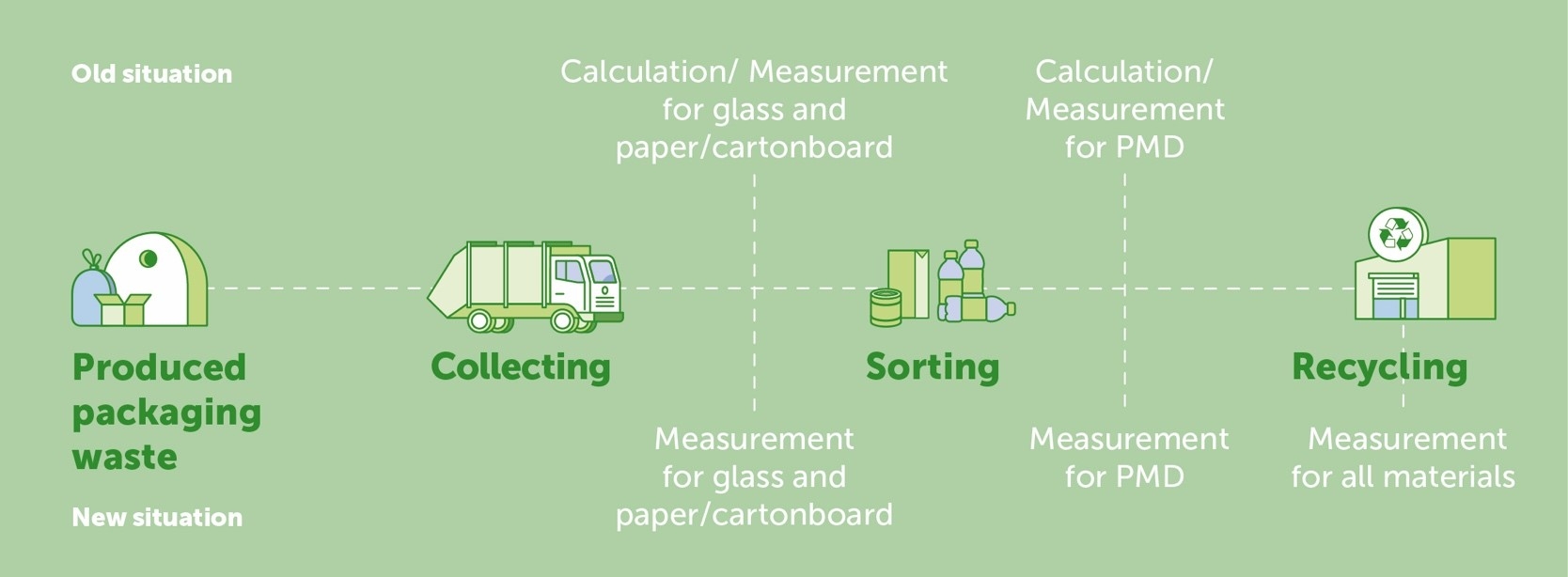In 2021, Fost Plus recycled 89.9% of the household packaging put on the market by its members. These figures were calculated on the basis of a new and more stringent measuring methodology. We explain why this is an improvement and where the discrepancy originates.
The background: towards a level playing field in Europe
The European Union Circular Economy Package provides a strict legal framework to reduce waste and introduces an ambitious long-term plan to encourage recycling. As part of this, the 2018 Packaging and Packaging Waste Directive introduced a new methodology to calculate recycling percentages. The aim is to ensure a level playing field so that the results of the various European member states are calculated in the same way and can be properly compared with one another. The different member states have to report to Europe using the new measuring methodology for the first time by the end of June 2022 at the latest. These reports relate to the results for the year 2020.
The Interregional Packaging Commission (IRPC) is therefore reporting the Belgian packaging recycling figures for the year 2020 to Europe using the new computation point. Both Fost Plus for household packaging and Valipac for industrial packaging apply the new measuring methodology.
How is the recycling percentage calculated?
In concrete terms, from now on recycling will be calculated at a later point in the chain. Whereas the recycled quantities were previously measured upon leaving the sorting centres, this is now done when the recycling actually takes place. The calculation point therefore lies at the recycling companies, after any impurities and unsuitable substances have been removed from the sorted materials in the recycling centres.

It is important to understand that the calculation point is a hypothetical point in the recycling chain. We calculate this point on the basis of analyses of the material sent for recycling. A great deal of research has been carried out for this purpose in the past few years. A reliable methodology has been developed and approved by the IRPC.
So Belgium calculates the recycling figures for household packaging fully in line with the European directive and adopting the same principles as the other European member states.
The impact on achieving the recycling targets
The new measuring methodology has an impact on the recycling figures of all European member states – including Belgium. However, the results for 2021 show that here, the effect for most materials remains limited. Belgian bales of packaging materials have attained very high degrees of purity for many years. There are three reasons for this:
- The simple, uniform sorting message for the public minimises the risk of sorting errors.
- The door-to-door collection system makes it easy for everyone to participate, so that as much packaging as possible is sent for recycling.
- Centralised chain management has enabled us to invest in high-tech sorting centres which can separate the contents of the PMD bags into at least 14 different, pure material flows.
For plastic, for example, we note another rise in the recycling percentage. At 52% for 2021, we are way ahead of the European target of 50% by 2025. Even though not all the intermunicipal companies have been using the New Blue Bag for a full year!
Dual reporting for Belgium
In addition to the European recycling targets that apply for all the member states, the Interregional Cooperation Agreement also sets specific targets. Belgium goes further than Europe here, for example by calling for 50% recycling for plastic packaging in 2020 – which we achieved.
In the coming years, Fost Plus will report to the IRPC using both the old and the new calculation method. The IRPC will determine which calculation method will eventually be used to check the results against the legal goals of the Belgian Interregional Cooperation Agreement in the new conditions of accreditation, which will come into force as of 2024.
For more information about our recycling figures, read our 2021 activity report here.
